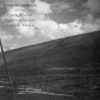
Grip Collection 51-100 Index
Click on a thumbnail
86-P-21-051
A shot of the Berry Camp on Mammoth Creek, taken from up on the ditch above
the camp, below the Steese Highway.
86-P-21-052
One of the two "Cats" used by Berry comapny. "I think one was
an RD-8 and one was smaller. In 1984, my wife and I visited Harold Christensen,
who said, 'You can't believe, I left camp in 1941 and never got back to camp,
the war coming on. The US Government requisitioned all their equipment for
the Alaska (Alcan) Highway. So they never got any of that equipment back."

86-P-2l-053
Gantry and bucketline, with part of the ladder.
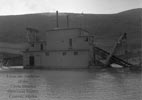
86-P-21-054
Sideview of dredge, with water coming off sluiceboxes and Old Glory waving
high."

86-P-2l-055
Bill Zibeil with big monkey wrench and cap to go on shaft on lower tumbler.
You can see behind Bill where shaft and tumbler was snapped off. Tumbler was
7-8 inches in diameter.
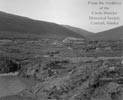
86-P-2l-056
"Now here we have a long range view of the giant, and closein the foreground
is ground pretty well prepared for it to be thawed by cold-water thawing.
Then the dredge would come along after that."

86-P-2l-057
Bill Zibeil and snapped shaft on tumbler.

86-P-2l-058
Dredge, showing cables in use.

86-P-2l-059
Archie Laird and RD-8 moving pumping unit from Mastodon to Mammoth.

86-P-2l-060
Lee Rebail in his hat, Fairbanks.
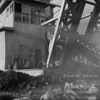
86-P-2l-06l
Lightstruck view, but showing winchhouse. Stanley Gibson was winchman.

86-P-2l-062
"This fellow's name was Roy. That is all I ever knew him by. He worked
at camp. He was always such a stern fellow."
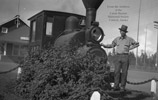
86-P-2l-063
Lee Rebail and old Tanana Valley Railroad engine at Alaska Railroad depot
at Fairbanks.
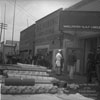
86-P-2l-064
Fairbanks Paint Shop fire in Fairbanks, Third Avenue. Linoleum and other supplies
salvaged and sitting on street. Firetruck in background.
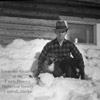
86-P-2l-065
Wilmer Kirsch with two pups, in front of log cabin.
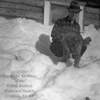
86-P-2l-066
Wilmer Kirsch, with pup.
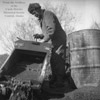
86-P-2l-067
Rocker box, sluicing, at Berry Camp.
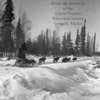
86-P-2l-068
Leonard Seppela's dogteam. "When Hank Pagean and I took out a winter
dump on Happy Creek, Happy Station near the Alaska Railroad and University
of Alaska, we had use of this team. Hank is on the sled."
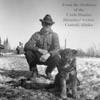
86-P-2l-069
"I think this is George Blondeau with a pup."

86-P-2l-070
The Birch Hill weasel is looking for something to eat.
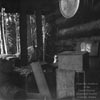
86-P-2l-07l
Another weasel, shown here with snowshoes.
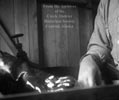
86-P-2l-072
A hand, holding some nuggets. This was unusual for the dredge.

86-P-2l-073
A closeup of a big gear, being worked on inside the dredge.

86-P-2l-074
In the woods at Birch Hill.

86-P-2l-075
In the woods at Birch Hill.

86-P-2l-076
Closeup of snapped shaft, with superintendent, Harold Christensen, in background.

86-P-2l-077
Closeup of riffles and plate during cleanup.
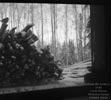
86-P-2l-078
Camp robber at Birch Hill wood camp.
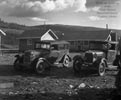
86-P-2l-079
"I don't know who had the luxury of this nice car and this nice 4-door
sedan. It was probably a 33 model. Also a Ford pickup." At Berry camp.
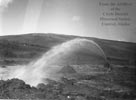
86-P-2l-080
Giant and unidentified operator.
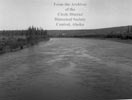
86-P-2l-08l
Birch Creek at Ferry.
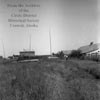
86-P-2l-082
(Circle City, showing NAT&T messhall, two stories, steamboat wood pile,
warehouse, tripod phone pole, and three men, possibly Ed Rasmussen at left.)
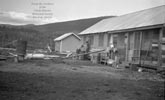
86-P-2l-083
Putting the siding on the cook shack. Berry Camp, Mammoth Creek.
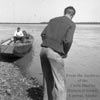
86-P-2l-084
Lynn Bremmeyer, in boat, and Bill Sundquist, becoming a sourdough, at Circle
City.
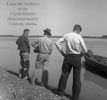
86-P-2l-085
Bill Sundquist, Lee Rebail, and Lynn Bremmeyer "becoming sourdoughs"
at Circle City.
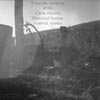
86-P-2l-086
Lee Rebail on the steam boiler, steaming for a drill crew.
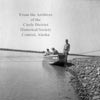
86-P-2l-087
Lynn Bremmeyer, Bill Sundquist and Lee Rebail on banks of Yukon river at Circle
City.
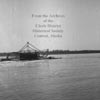
86-P-2l-088
Fishwheel at Circle City.

86-P-2l-089
Gordon MacDougal on the chicksale. He was a winchman for a short time and
later chief of police in Port Orchard, Washington.
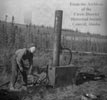
86-P-2l-090
Bill Grip at the steam boiler.
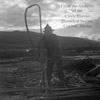
86-P-2l-091
Bill Grip in "tin" hat and jacket, working on cold water pipe laying.
"My hands are on the clamp and hammer with the metal pin that circled
the pipe. It was up and down, up and down, twist, up and down."
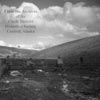
86-P-2l-092
Three fellows taking a break in the point field.
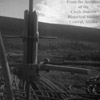
86-P-2l-094
Closeup of clamp and hammer. "You can see the big nut there that we would
secure with our pipe wrench and the hammer--and lots of points laying there."
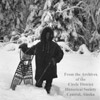
86-P-21-095
Bill Grip in parka and with snowshoes and rifle. "I had a 250-350 Savage.
It was a little bit small for this country because of the brush, but it was
a fast gun. This was on Birch Hill.
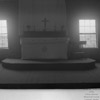
86-P-21-096
Interior of mission at Circle City. Light is streaming in from windows on
both sides of altar.
86-P-21-097
Lee Rebail and Dan Bergevin in front of camp tent at Berry Camp, Mammoth Creek,
1936.
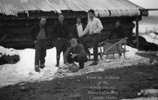
86-P-21-098
From left to right: Glenn Johns, from Newfoundland, Dan Bergevin, Bill Grip
(kneeling), Steve Rideout, also from Newfoundland, and Lee Rebail, without
a hat! Person at far right unidentified.
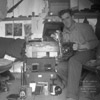
86-P-21-099
Interior of tent. "Hank and I prefered the privacy of the tent, because
we both had pretty much the same interests." Note wall pinups, Pagean's
camera outfit, including Speed Graphic, developing tank, cutfilm holders,
Weston meter, Woods Three Star Arctic sleeping bag and 250-300 Savage Rifle.
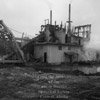
86-P-21-100
Aftermath of 1938 dredge fire "by dawn's early light." "You
will see on the stern gang the spud, a heavy metal object that may have been
30 feet in length. The winchman would raise it and then he would drop it to
anchor it much like you would drop an anchor in a boat. This would permit
this dredge to swing in a semi-circle and deposit the tailings or rocks that
came off the stacker in two even rows, like sliced peaches. On this side,
the starboard side, you can see a little shelf or hood attached and outside
of that was the screen up there that was the particular engine that ran the
pump that brought all the water up into the screen that would let the heavy
rock go out on the stacker and the finer stuff would drop in the sluiceboxes.
Then the water would run through the sluice boxes and run off the heavy stuff
again--not the big ones, but the heavy stuff that wouldn't deposit into the
riffles where the mercury was. Back to where the shelf was attached, there
was a door and I was an oiler one season and would go out there and keep that
screen clean, because if you didn't, it wouldn't take any water--clogging
and nothing going through the sluice boxes.

